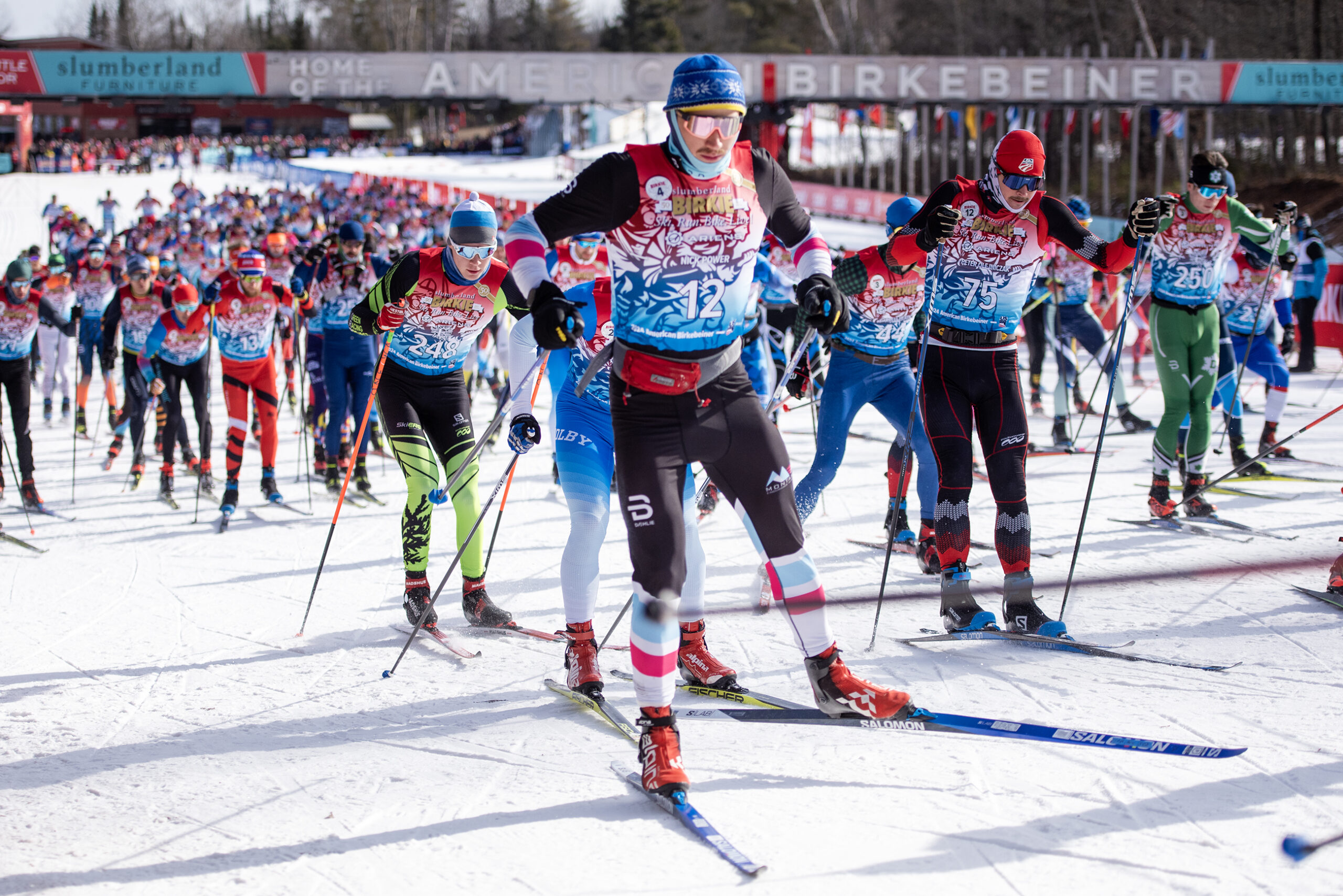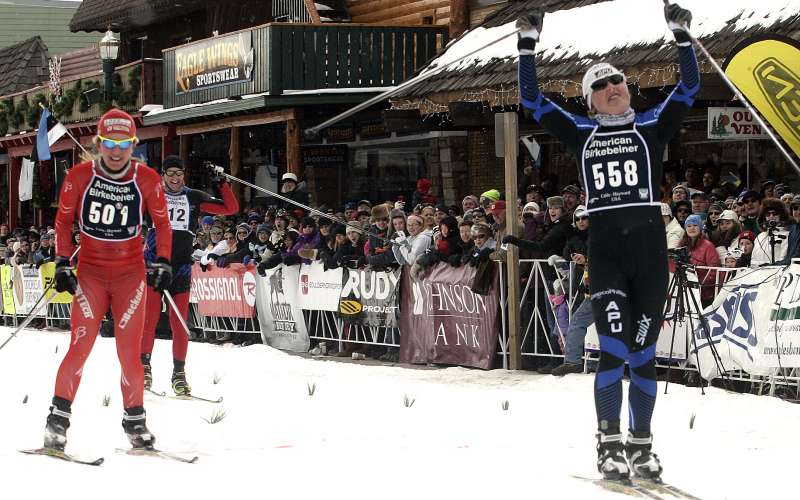This week, the Wisconsin town of Hayward is celebrating a winter “carnival” atmosphere as tens of thousands of people flock to the Northwoods for the annual American Birkebeiner ski festival.
The Birkies are a more than 50-year-old tradition for the region. It’s the largest cross-country ski event in America and one of the largest in the world.
This year’s event spans from Feb. 19-23.
Stay informed on the latest news
Sign up for WPR’s email newsletter.
Ben Popp is executive director for the American Birkebeiner Ski Foundation. On WPR’s “Wisconsin Today,” Popp called outdoor recreation, including skiing, the “heartbeat” of northern Wisconsin’s culture and economy.
In 1973, the first Birkie race had 35 “brave” skiers signed up for the event. Now, Popp said, nearly 40,000 skiers and spectators head to Hayward — a town that typically has a population of fewer than 2,600 people — every year to take part in the festivities.
Popp said the event brings nearly $25 million of economic impact to the Hayward region.
The main event is a 55-kilometer race through Wisconsin’s Northwoods, across the ice of Lake Hayward, and then a final sprint through the streets of Hayward.
Popp said he loves the event because of the diversity of people and skill levels it attracts.
“Last year, we had the best woman’s skier in the world — Jessie Diggins — racing, all the way down with people doing the ‘cold turkey Birkie,’ literally their first time on skis, and they’re going to try and make the 55-kilometer trudge,” he said. “Once you get Birkie fever, there’s no turning back.”
Popp added that the youngest registered participant this year is 3 years old, in the BarneBirkie youth event. Meanwhile, the oldest registered participant this year is 86. Popp said many years see skiers who are well into their 90s.
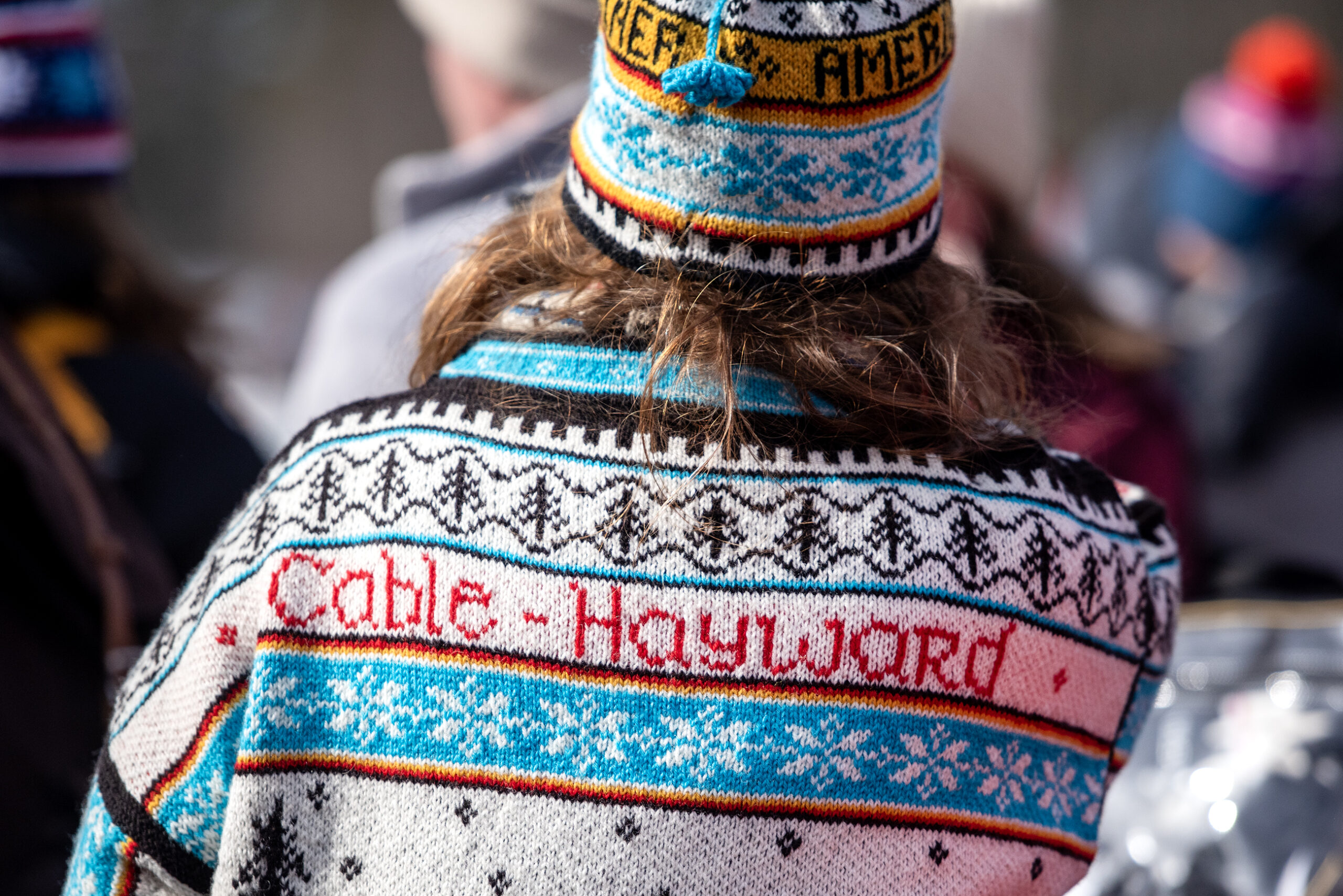
Variations on the Birkie
The American Birkebeiner “Birkie Week” features more than a single ski race. The event also hosts ParaBirkie adaptive events, Junior Birkie relay races and, Popp’s favorite, the Giant Ski.
The ParaBirkie is a 3-kilometer adaptive ski race. Some of the skiers are blind or use sit skis, Popp added.
Popp compared the Giant Ski to picnic potato sack races. Six people attach themselves to two massive skis and have to move in unison down the snowy streets of Hayward to win the race.
Melissa Omernick is vice president of the Wisconsin Trailblazers Sled Dog Club. She’s been attending Birkies for the last six years. Omernick and her dog, Luja, are participating in this year’s Barkie Birkie race: a nearly 5-kilometer “skijoring” event where dogs pull their skiers through downtown Hayward.
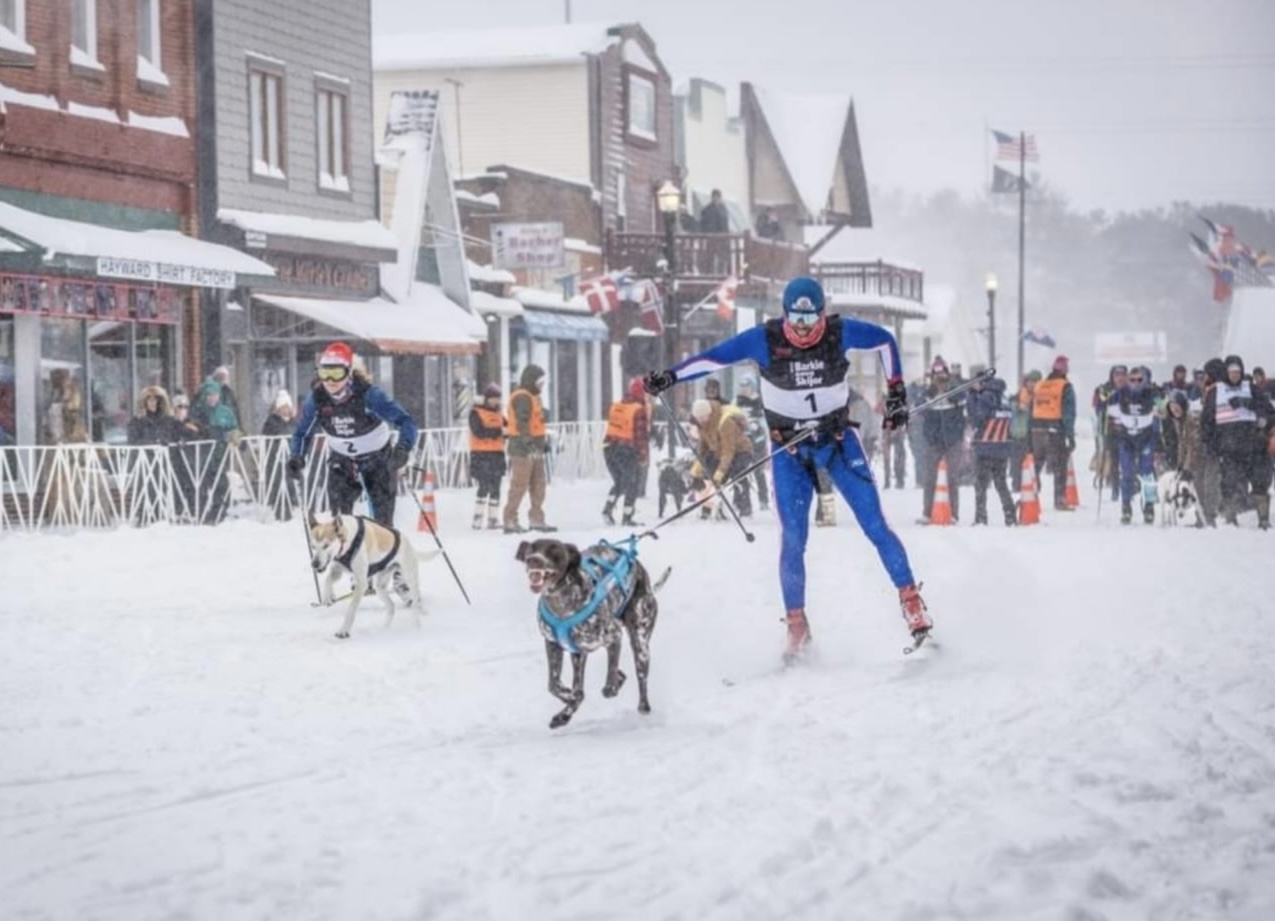
Omernick compared the atmosphere of Birkie Week to the excitement of a carnival.
“We’re all lined up on Main Street, and then we take off and there are people up and down the sidewalk, cheering the dogs on,” she said. “These dogs want to run. We aren’t pushing them out there with a pole. They’re pulling us because they get to do something fun and exciting and exercise.”
Omernick said her dogs and her husband planned to start traveling from Gleason at 3:00 a.m. to reach Hayward in time for the race. While Omernick isn’t planning to wear a costume, she said many years skiers wear matching costumes with their dogs or dress like Prince Haakon, the Norwegian royal whose story inspired the Birkebeiner ski races.
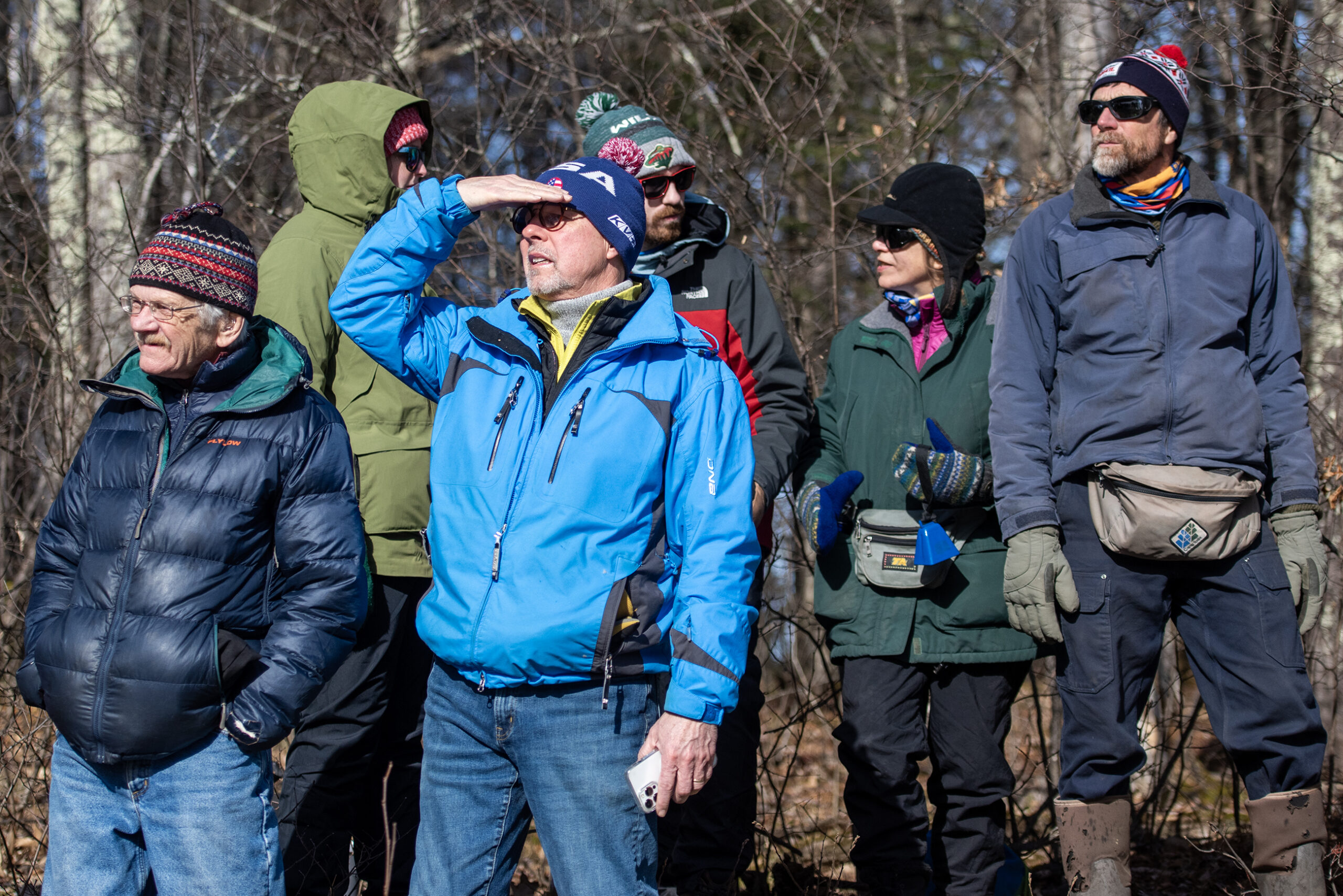
Mother Nature blessed the Birkie — this year
These cross-country ski races — and the Northwoods economies they support — are dependent on weather conditions. Comfortably cool weather with lots of thick snow is critical for packing into trails.
For 2024’s races, Birkie coordinators were forced to manufacture snow for roughly 11 kilometers of the ski trail due to low precipitation, Popp said.
This year’s Birkie was nearly a repeat of that, with this winter’s dry conditions and recent extreme freezing temperatures. But Popp said he now expects 2025 to be a solid trail, thanks to Mother Nature coming through at the last minute and the volunteer community crafting the trail to perfect conditions.
“Lo and behold, the snow dance has worked,” Popp said. “It’s sort of a mix of the Chicken Dance meets the Macarena.”
Popp said his foundation takes roughly 125 dump trucks’ worth of snow from Lake Hayward and surrounding areas to blanket the streets of downtown Hayward in snow for skiers.
After canceling the American Birkebeiner in 2017 due to rainy conditions, Popp said he and his team decided to pump investments into snow infrastructure to ensure they could manufacture what they needed for the Birkies any year, under any conditions.
“I’d be remiss to say that we don’t think about climate change and how it affects skiing and snow in northern Wisconsin,” Popp said. “Because not only is [Birkebeiner] a great event, it’s just so important to our local economy.”
“I know that as we move into the future, the event may change,” he continued. “But at the end of the day, figuring out a way to hold the American Birkebeiner will always be important to not only our local community, but certainly our region and the greater globe as part of the Worldoppet.”
Wisconsin Public Radio, © Copyright 2025, Board of Regents of the University of Wisconsin System and Wisconsin Educational Communications Board.



